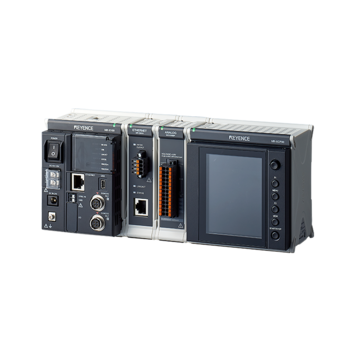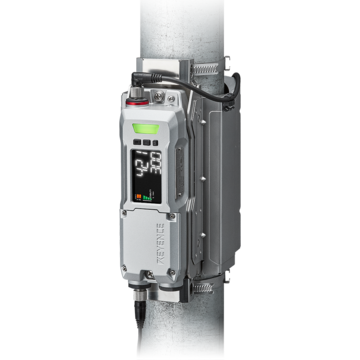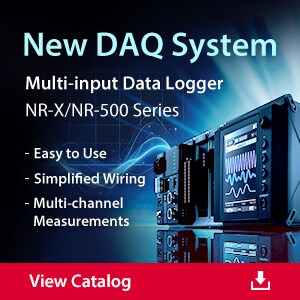Data Acquisition (DAQ)
Flow Rate Measurement of Cooling Water
-
Tags:
- Pulse , Temperature
In industries with cooling water towers and similar systems, water flow measurement helps heat transfer and control efforts. The purpose of flow meters is to measure the liquid flow rate of cooling water.
Cooling Water Flow Measurement Devices
Different types of cooling water flow meters are used in industrial applications. The meter option depends on reliability, functions, and measuring goals.
Ultrasonic Flow Meters
These meters work on the premise of ultrasound, which uses high-energy sound waves to measure a pipe's fluid flow rate. Ultrasonic meters are available in two designs: hand-held or clamp-on.
Magnetic Flow Meters
These meters work on the premise of electromagnetic induction. Changes in viscosity, temperature, pressure, and fluid density do not impact measurements. They are suitable for use in RAS, WAS, raw sewage, wastewater, and other conductive liquids. The installation is available in NPT threads, DIN, and Hot-tapped.
Turbine Flow Meters
Turbine flow meters work on the principle of turbine rotation. They measure the fluid's velocity and are used to measure water, hydrocarbons, and industrial liquids.
We’re here to provide you with more details.
Reach out today!

Why Use Cooling Water Flow Measurement Devices?
Cooling water flow measuring devices assist in making industrial processes effective, safe, low-cost, and environmentally friendly and provide additional benefits, including:
- Efficient Cooling Operation: Water flow measurement devices help determine how hot or cold water equipment or systems are over time. This information lets operators or technicians calibrate systems to prevent overheating and ensure proper cooling. This can be critical information for any energy management system.
- Extend Equipment Life: Flow rate measurement devices help achieve correct liquid flow rates, which can influence other decisions that prevent wear on pipes, corrosion, and system breakdown.
- Improved Safety: Measurement devices are useful in maintaining a proper temperature. This can help prevent hazards like pipe bursts leading to injuries.
- Data-Driven Decision Making: Accurate flow measurement can help managers and engineers pinpoint issues and plan for maintenance that eliminates guesses or trial-error approaches.
Key Features of KEYENCE Data Loggers
KEYENCE has a line of measurement DAQ that provides dependable compatibility with flow rate measurements. The NR-X Series, for example, is a small and light weight data logger that has the following key features:
- Can be used with eight types of measurement units and perform multi-channel measurements using up to 576 channels
- Reduced-wiring system significantly reduces the effort required for wiring
- The help function and easy-to-understand icons make it easy to operate, even for first-time users
- Multiple power supply options, including AC, DC, and battery power
- High-capacity lithium-ion battery capable of up to 800 minutes of data collection
- Wireless LAN unit allows for remote measurement from anywhere
Get detailed information on our products by downloading our catalog.
View Catalog

Applications of Flow Meters for Cooling Water
Commonly used in cooling water towers and industrial circulating water systems, industrial flow meters are used in temperature control, heat transfer, air conditioning, and equipment cooling.
Flow meters are used to determine if the cooling operation is going well or needs to be calibrated. In cooling towers, for example, a magnetic flow meter is typically installed on the inlet piping. With proper calibration and monitoring, data from the flow meter is used to adjust the tower’s water flow rates and fan speed. This way, optimal and efficient heat transfer is achieved while lowering the facility's energy costs.
Flow Rate Measurement Sensors
Flow rate meters use water flow sensors to measure the fluid flow rate in a pipe and display a specific numerical value. The pulse signal from the flow rate meter can then be fed into other systems like measurement DAQ or data loggers to determine flow rate data over time.
KEYENCE’s Data logger NR-X Series is a multi-input data logger that’s compatible with different types of flow rate meters. It can receive output pulse signals from a flow meter and use that to provide pulse accurate measurement. Its reduced wiring design means less wiring work and incorrect wiring possibilities. Another multi-input data logger option is the KEYENCE’s DAQ NR-500, which has the option for direct connection to a PC.
Have more questions about any of the DAQ solutions? Contact us today.
Contact us to learn more about how our advanced technology can help take your business to the next level.
Contact Us



